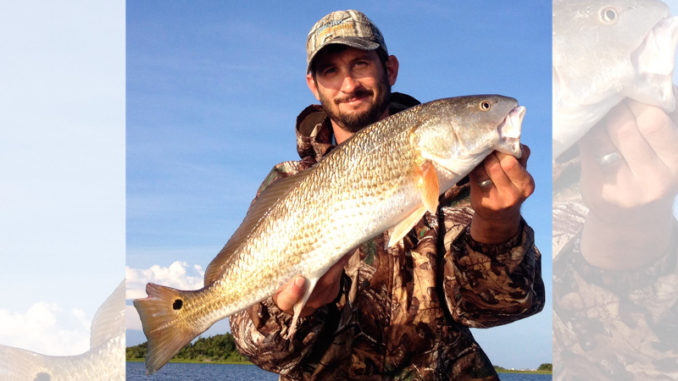
Fishing live bait vertically is one hot method
Fishermen targeting red drum often scour the skinny waters of far-removed marshes or bays as if in search of hidden treasure. While one may be found there, one guide has discovered a pot of redfish gold hidden in plain sight. Inside New River Inlet, around Sneads Ferry, locating deep-water oyster beds is the key to tangling with quality reds.
Capt. Ricky Kellum of Jacksonville’s Speckled Specialist Inshore Fishing Charters fishes the New River from the inlet to Sneads Ferry, chasing the best bite around. According to him, the likelihood of hooking a red that’s above-average in size is one of the main draws inside the inlet.
“At least half of the reds we’re catching here are over-slot fish. They run from 26 to 30 inches,” Kellum said. “These are some of the same larger reds that we’ll catch in the winter on the shoals, outside the inlet.”
Unlike their shallow-water brethren, these reds are going deep. They turn their noses up to belly-crawling in the nearby marshes. Instead, they inhabit depths of 15 to 20 feet.
Deep oyster beds are the key here
“A lot of real rocky bottom is down there,” said Kellum, referring to the oyster beds that attract swarms of baitfish, crabs, and shrimp. And it also attracts the redfish that prey on them.
“You can count on the reds here almost every year, about the same time,” Kellum said. “If we have a lot of bait in the river, they’ll show up as early as August, and the fishing will only get better in the fall.”
Following the northern winds and falling water temperatures, baitfish will rush towards the ocean to find more stable conditions. New River Inlet serves as the funnel that drains not only the river, but miles of marshland and the Intracoastal Waterway. Redfish have learned to line up for the buffet. And the best way to get hooked up is to present a bait in its natural manner.
“We’re drifting with the tide to catch these fish,” said Kellum, who fishes a Carolina-rigged mullet or menhaden vertically, jigging it, as opposed to dragging the bait behind the boat. “We tried to anchor up but had more success drifting. You can cover more ground that way.”
This technique proves more effective and is also easier on the angler
“With all the oysters, if you don’t fish vertically, you’re going to get hung up a lot. We’re using a heavy, 1-ounce weight to keep the bait straight down and bouncing it on the bottom as we go. A lot of floating grass is in the inlet, too. But if you drift with it, it’s not so bad,” said Kellum. He explained that a stationary line would collect the passing grass and foul the bait.
Sizeable reds require sizeable baits. Kellum tries to dress his Carolina rigs with a 5- to 6-inch mullet or menhaden.
“Using a big bait will keep off the little fish, like the black bass and lizardfish,” Kellum said. “All you will catch are quality flounder and redfish.”
Kellum’s baits are pinned to a 3/0 circle hook so he can release the big reds unharmed, as well as any reds caught after the one fish daily creel limit in the 18- to 27-inch slot is filled. Gut-hooking reds with a J-hook and live bait is inevitable, and the larger fish are of particular importance. They will soon join the breeding stock offshore.
Artificial lures are also working
In addition to live baits, anglers can also score with artificials.
“I almost always fish live bait with clients. But a 4-inch Gulp! shrimp on a 3/8-ounce or larger jighead with a good, strong hook will work,” Kellum said. “I like the natural color, but white is hard to beat.”
Kellum stresses that bouncing the bait off the bottom is crucial. Allowing it to reach the oysters and snapping it up quickly mimics the fleeing motion of a shrimp and makes it stand out from the throngs of bait already there. The light contact also keeps the jig from becoming snagged in the oysters or having the line swept into them from the swift currents that govern the inlet conditions.
It’s not uncommon for an active bite to be dependent on moving water. But the problem is more often slack water turning off fish activity. New River Inlet is a little different. A high volume of water and its bottleneck design means that water is almost always moving. What to consider is, when is it slow enough to fish effectively?
Pay close attention to the tides
“This is such a tide-driven fishery. The best time to be there is about an hour before and after a tide change,” Kellum said. He notes that the current loses momentum as it reverses direction. “I prefer a high, falling tide, because you’ll have all the bait coming out of the marshes, and those redfish aren’t going to stay in there without it.”
“Like a lot of good spots, this one was stumbled on by accident,” Kellum said. “It’s a good place to drift for flounder. We started catching reds there one day, and it’s been consistent this time of year ever since.”
DESTINATION INFORMATION
HOW TO GET THERE/WHEN TO GO — Sneads Ferry, just east of the intersection of NC 210 and NC 171 in Onslow County, is the Town closest to New River Inlet. US 17 provides good access from north and south. Jumping off I-40 at NC 24 or NC 50 will lead to US 17. Two launch areas serve the inlet: Fulcher’s Landing on Fulcher’s Landing Road and New River Marina, a fee ramp, on Jones Road. New River inlet is productive year-round, to some degree, for trout, flounder and red drum. Prime time for reds can start as early as August, but the water cools enough to make the October-November window the best. Reds can be caught on shoals outside the inlet in late winter and early spring.
TACKLE/TECHNIQUES — The top live baits for big reds in the inlet are 5- to 6-inch mullet; menhaden will work as well, but they can be harder to find. Thread either on a 3/0 circle hook and fish it on a Carolina Rig with a 1-ounce weight. For artificials, a 4-inch Gulp! shrimp fished on a 3/8-ounce or larger jighead is best in natural or white colors. Live baits should be fished vertically,by raising and lowering the rod tip sharply. Medium-action rods work just find, with reels spooled with 20-pound braid.
GUIDES/FISHING INFO — Capt. Ricky Kellum, Speckled Specialist Inshore Fishing Charters, 910-330-2745, www.speckledspecialist.com; Capt. Brent Banks, “Speck”tacular Fishing Charters, 910-389-4941, www.specktacularfishing.com. See also Guides and Charters in Classifieds.
ACCOMMODATIONS — The Seaward Inn, Sneads Ferry, 910-347-0469, www.theseawardinn.com; Holiday Inn Express Hotel and Suites, Sneads Ferry, 888-465-4329, www.hiexpress.com/sneadsferrync; Topsail Shores Inn, Sneads Ferry, 910-685-0969, www.topsailshoresinn.com.
MAPS — Capt. Segull’s Nautical Charts, 888-473-4855, www.captainsegullcharts.com; GMCO’s Chartbook of North Carolina, 888-420-6277, www.gmcomaps.com; Sealake Fishing Guides, 800-411-0185, www.thegoodspots.com.
Click here to read about the fall run of king mackerel along North Carolina’s southern coast.

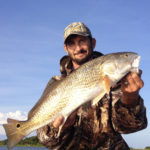
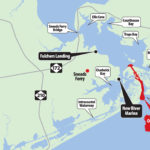
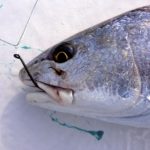
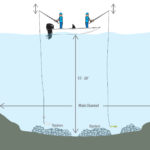

Be the first to comment